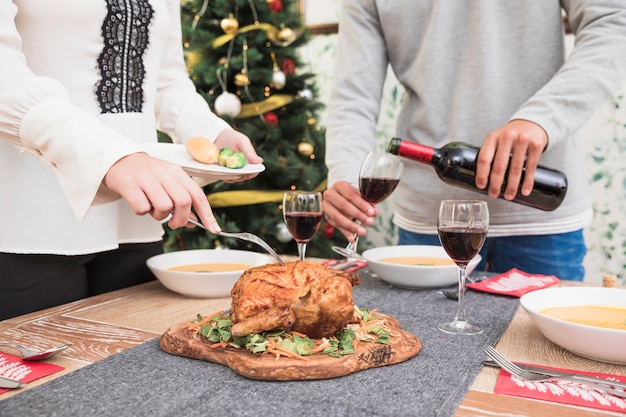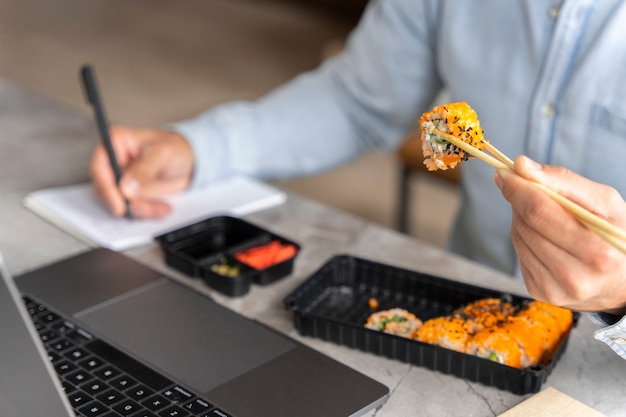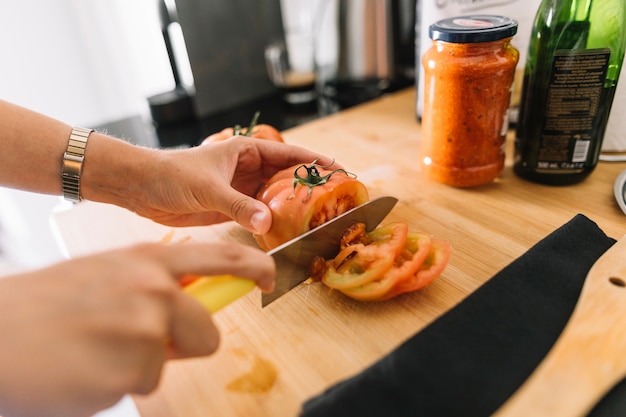Let's talk burgers. You know that feeling, right? The one where the mere thought of a juicy, perfectly cooked burger sends you straight to the kitchen. But then the question arises: How long do I cook each side? I’ve been there, staring at my sizzling patties, wondering if I’ve left them on too long or not long enough. A dry, overcooked burger is a culinary crime, let me tell you! So, I’m going to dive into the world of burger cooking and share everything I’ve learned. Buckle up, folks, it’s about to get juicy!
Part 1: The Patty's Thickness Matters

First things first, burger cook times aren't one-size-fits-all. It all depends on the patty's thickness. I've learned the hard way that cooking a thin, supermarket-bought patty for the same time as a thick, hand-formed one is a recipe for disaster. Thin patties cook faster, while thicker ones require more time. It's basic science, really.
Thin Patties: A Quick Bite
Thin patties, usually around 1/4 inch thick, are perfect for quick weeknight meals or casual BBQs. They cook quickly, typically in 3-4 minutes per side. Think of those pre-formed patties from the supermarket, not the most glamorous, but they get the job done when you're short on time.
Medium Patties: The Happy Medium
Medium-sized patties, about 1/2 inch thick, strike a balance between cook time and juiciness. They’re my personal favorites, offering enough time to achieve that perfect char on the outside while retaining a juicy and tender interior. They usually need about 5-6 minutes per side.
Thick Patties: The Ultimate Burger Challenge
Thick patties, generally 1 inch or more, are the real challenge. They demand patience and precision for even cooking. We're talking about those lovingly hand-formed beauties made with high-quality beef. Think of them as culinary masterpieces! These patties need around 7-8 minutes per side, sometimes even longer depending on thickness.
Part 2: The Inside Story: internal temperature

Now, let's talk about the heart of the burger: the internal temperature. It gets a bit scientific, but don't worry, I won't overwhelm you with complicated formulas. Just remember this: for the best flavor and food safety, you want your burger to reach a safe internal temperature of 160°F (71°C).
The meat thermometer: Your Burger's Best Friend
This is where a meat thermometer becomes your best friend. No more guessing! Simply insert the thermometer into the thickest part of the patty, avoiding the bone if you're using a burger with one. A good thermometer provides an accurate reading, ensuring your burger is cooked to perfection.
Part 3: Doneness: A Matter of Taste

So, how do you know what level of doneness you prefer? This is where personal preferences come into play. I adore my burgers medium-rare, but I know some folks prefer them well-done. Let’s break down the different levels of doneness:
Rare: The Pink Perfectionist
A rare burger boasts a vibrant red center, a slightly cool texture, and is perfect for those who love the raw flavor of beef. Remember, rare burgers are best enjoyed immediately as they'll continue cooking even after they're off the heat.
Medium-Rare: The Sweet Spot
This is my personal favorite. A medium-rare burger has a pink center with a hint of brown around the edges. It's juicy, flavorful, and perfectly tender. It's also generally considered the safest level of doneness, as it reaches a safe internal temperature.
Medium: A Balanced Flavor Profile
A medium burger has a slightly brown center with a touch of pink. It's still juicy but a bit more cooked than medium-rare. This is a good choice for those who prefer a bit more cooked flavor.
Medium-Well: The Safe Bet
This level of doneness has a mostly brown center with a hint of pink. It’s cooked a bit more than medium, but it still retains some juiciness. This is a popular choice for those who like their burgers on the safer side.
Well-Done: No Pink Allowed
A well-done burger has a completely brown center with no pink whatsoever. It’s the most cooked level of doneness, and it can sometimes be a bit dry. It’s a good choice for those who prefer their burgers fully cooked.
Part 4: The Grill Master's Handbook
Now, let's get down to the nitty-gritty of grilling. This is where the real magic happens. We’re talking about that smoky flavor, those beautiful char marks, and that perfect crispy crust. But don't worry, you don't need a fancy grill to achieve great results. Even a simple charcoal or gas grill will do the trick.
Preheating the Grill: Laying the Foundation
First things first, preheat your grill to medium-high heat, around 400-450°F (204-232°C). This is crucial for getting that beautiful char on the outside of your burgers without overcooking them. If you're using a gas grill, ensure all burners are lit and heated to the desired temperature. For a charcoal grill, let the coals burn until they are white-hot and covered in a thin layer of ash.
Cleaning the Grill: A Vital Step
Before tossing those patties onto the grill, give it a good scrub. This prevents your burgers from sticking and helps them cook evenly. You don't want those pesky grill marks turning into burnt-on bits, trust me!
Oiling the Grill Grates: A Slick Trick
Here's a little trick I learned from a seasoned grill master. Lightly oil the grill grates with a paper towel or brush. This prevents the burgers from sticking and creates those beautiful grill marks. Any kind of oil will work, but I prefer a high-heat oil like avocado oil or sunflower oil.
Adding Flavor: The Burger's Best Friend
Before placing your patties on the grill, consider adding some flavor. This could be as simple as sprinkling on salt and pepper, or you can get creative with spices like garlic powder, onion powder, or paprika. Some even like to add a little bit of sugar to help caramelize the patties. Experiment and find your favorite flavor combinations!
Part 5: Mastering the Burger Cook
Alright, your grill is preheated, your patties are seasoned, and you're ready to cook. Now, let's focus on those cook times. Remember, these are just guidelines, so use your best judgment and adjust based on your desired doneness.
Thin Patties: A Speedy Cook
Thin patties cook quickly. They typically take around 3-4 minutes per side for medium-well doneness. Keep an eye on them and flip them once the bottom has developed a nice crust and grill marks.
Medium Patties: The Art of Patience
Medium-sized patties need a little more time to cook through. They’ll take about 5-6 minutes per side for medium doneness. Flip them once the bottom has browned and developed a good crust, and keep a watchful eye so they don't overcook.
Thick Patties: The Grill Master's Test
Thick patties are the ultimate challenge, demanding patience and precision. They need about 7-8 minutes per side for medium doneness. Flip them once the bottom has browned and developed a good crust, and make sure they cook evenly.
Resist the Urge to Press: The Biggest Mistake
Here's a common mistake beginners make: pressing down on the patties while they cook. This squeezes out all the juices, leaving you with a dry, tough burger. Resist the urge to press down, let the patty cook naturally, and it will reward you with juicy, flavorful results.
The Grill Press: A Controversial Tool
Some swear by using a grill press to create even cooking and a nice crust. Personally, I'm not a fan. I find it tends to squeeze out too much of the juices, leaving the burger dry and lacking flavor. If you choose to use a grill press, be very careful not to press down too hard.
Part 6: The Importance of Rest
Once your burgers are cooked to your liking, it's important to let them rest for a few minutes before slicing and assembling your burgers. This allows the juices to redistribute throughout the patty, resulting in a juicier, more flavorful burger. Think of it as a little reward for your patience!
Part 7: Building the Perfect Burger
Now, the fun part: assembling your burger. This is your chance to get creative and add your own personal touch. I’ve got some favorite combos, but feel free to experiment and find what you like best.
The Classic: A Time-Honored Tradition
A good, old-fashioned burger starts with a soft, toasted bun. Then, layer on a juicy patty, some melted cheese, crisp lettuce, sliced tomatoes, and a tangy pickle. This classic combination is always a crowd-pleaser.
The Gourmet: A Fusion of Flavors
For a more gourmet burger, try adding some roasted red peppers, caramelized onions, or a dollop of creamy avocado. You can also get creative with cheese, using options like brie, blue cheese, or even a spicy pepper jack.
The Veggie Lover's Delight: A Plant-Based Treat
Don’t forget the vegetarian crowd! You can create delicious veggie burgers using a variety of ingredients like black beans, lentils, quinoa, or even portobello mushrooms. Just be sure to adjust the cook time accordingly.
Part 8: side dishes: The Perfect Complement
No burger is complete without a few tasty side dishes. These help balance out the richness of the burger and add variety in flavor and texture. I always have a few favorites on hand.
Classic french fries: A Timeless Pairing
Classic french fries are a must-have for any burger meal. They're crispy on the outside, fluffy on the inside, and perfectly seasoned with salt and pepper. You can even get creative with different seasonings, like garlic powder, onion powder, or paprika.
Coleslaw: A Tangy Counterpoint
Coleslaw adds a refreshing and tangy counterpoint to the richness of the burger. I like to make my own coleslaw using shredded cabbage, carrots, and a creamy dressing. You can also add some fresh herbs or a touch of sweetness with a little honey.
potato salad: A Creamy Comfort
Potato salad is a classic side dish that's perfect for BBQs and picnics. It's creamy, comforting, and a little bit sweet. I like to make mine with red potatoes, mayonnaise, celery, and onion. You can also add a little mustard for a tangy kick.
Part 9: FAQs: Your Burger Questions Answered
Now, let's tackle some of the most common questions I get about burger cooking. I'm here to help you become a burger master.
1. What’s the best way to make a burger patty?
For the most juicy and flavorful burgers, I recommend hand-forming your patties. Use a good quality blend of ground beef, typically an 80/20 mix. Form the patties into a disc, about 1/2 inch thick. Don't overwork the meat, as this can make the patties tough. And don't forget to make a small indent in the center of each patty. This will help the patty cook evenly and prevent it from bulging in the middle.
2. How do I prevent my burgers from sticking to the grill?
As mentioned earlier, lightly oiling the grill grates is crucial. You can also try using a grill mat or a non-stick cooking sheet. And remember to keep the grill clean. A dirty grill will make your burgers stick and burn.
3. What’s the best way to know when my burgers are cooked to my liking?
The best way to know for sure is to use a meat thermometer. Insert the thermometer into the thickest part of the patty, avoiding the bone if you're using a burger with a bone. For rare, the internal temperature should be 125°F (52°C). For medium-rare, it should be 130°F (54°C). For medium, it should be 140°F (60°C). For medium-well, it should be 150°F (66°C). And for well-done, it should be 160°F (71°C).
4. What happens if I overcook my burgers?
Overcooked burgers will be dry and tough. They’ll also lose their juicy flavor. If you're worried about overcooking, you can always cook them to a lower internal temperature and then let them rest for a few minutes before serving.
5. What’s the best way to store leftover burgers?
To store leftover burgers, let them cool completely at room temperature. Then, wrap them tightly in plastic wrap and store them in the refrigerator for up to 3 days. You can also freeze leftover burgers for up to 3 months. To reheat, thaw them in the refrigerator overnight and then reheat them in the oven at 350°F (177°C) until heated through.
Part 10: The Burger Journey: A Delicious Adventure
So, there you have it, my friends. The secrets to grilling the perfect burger, from choosing the right patties to mastering the grill and building the perfect masterpiece. Remember, burger cooking is a journey, not a destination. So, get out there, experiment, and don't be afraid to try new things. And most importantly, have fun! Happy grilling!
Everyone is watching

How to Cook Frozen Lobster Tails Perfectly: A Step-by-Step Guide
RecipesLobster. Just the word conjures up images of lavish meals, special occasions, and a taste of luxury. But let's...

Pigs in a Blanket Cooking Time: How Long to Bake for Perfect Results
RecipesAh, pigs in a blanket. Just the name conjures up images of those delightful little parcels of crispy pastry en...

Pork Fillet Cooking Time: How Long to Cook It Perfectly
RecipesPork fillet, or tenderloin as it's sometimes called, is a real favourite in our house. It's so versatile, and...

The Ultimate Guide to Cooking Delicious Frankfurters
RecipesLet's face it, we all love a good frankfurter. It's a classic, simple, and always satisfying. But let's be rea...

Wolf Meat Recipes: A Guide to Cooking Wild Game
RecipesLet's be honest, you don't see wolf meat at your local butcher shop every day. It's a bit of a wild card, but ...
